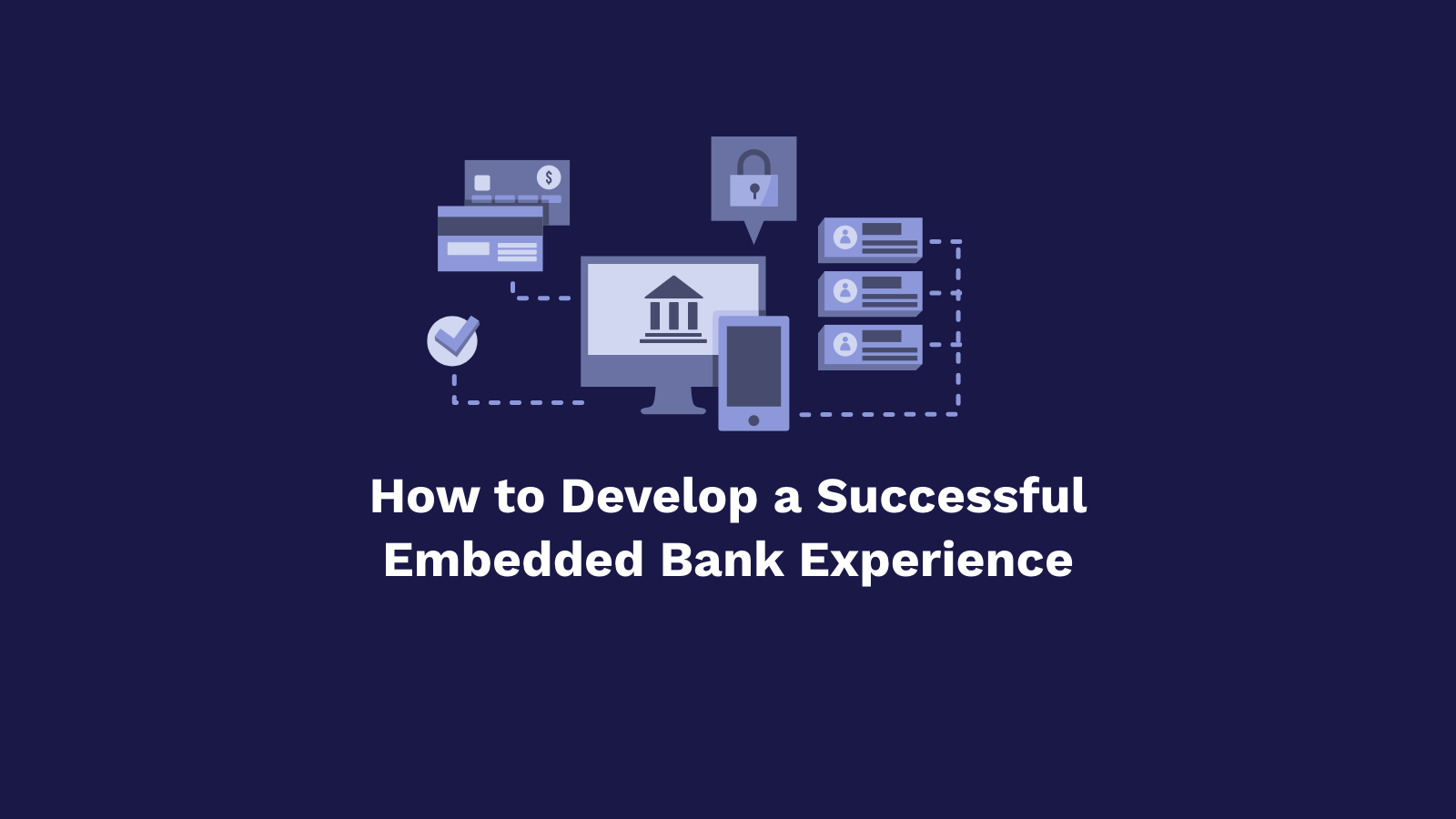
How to Develop a Successful Embedded Bank Experience
In response to the recent COVID-19 pandemic, consumers and businesses are rapidly shifting their banking expectations and demanding more personalized and integrated experiences from their financial institutions. McKinsey reported that in just two months, the industry "vaulted five years forward in consumer and business digital adoption."
While businesses are re-opening and considering moving forward with a hybrid business model, financial institutions are evaluating how they can cater to their commercial clients' increasingly digital expectations.
In a recent episode of the If I Ran the Bank podcast, Dave Pike, Head of APIs and New Flows at eftpos Payments Australia, observed that businesses are not "buying software off the shelf and then installing in their own data center." Instead, they are using "cloud-based ERP accounts payable solutions, payroll services, or treasury management systems." These are the systems where businesses live. Pike stated, "[As a bank] I'd be looking at how I would get my products working with those systems." Banks can leverage emerging technologies and innovations to create the best embedded banking experience by integrating into their clients' ERP and accounting systems to sustain and attract a new generation of customers.’
By creating a successful embedded banking experience, businesses can access their core banking services and take advantage of new products without having to leave the platform they use to run their business. Financial institutions have the opportunity to increase the adoption and utilization of their commercial banking products and services, which in turn will heighten loyalty and retention.
Embedded banking services are poised to help banks answer the increasing demand for a better digital experience. Financial institutions need to start planning now, and to support that effort, we've identified five key areas of focus in the development and delivery of a successful embedded banking experience:
- Know what ERP systems your clients use
The key to embedded banking is delivering conventional banking services within a customer's existing suite of tools. That tends to require a deep understanding of the most widely used ERP systems. At FISPAN, we make it possible for corporate clients to manage liquidity, conduct and reconcile payables and consolidate receivables from a bank-branded experience right within Netsuite, Microsoft Dynamics, Sage Intacct, Quickbooks, Xero, or Acumatica. For more information on the current ERP ecosystem and landscape, watch our on-demand ERP Workshop Webinar, or read about it in our blog here.
- Know what market segment and verticals you're targeting and what bank products clients use
As with developing any new product or service, it is critical to understand your target customers; what market segment and verticals will you target? What bank products do they use? Where are they underserved? Where are your products underutilized?
- Figure out how you will you support client adoption and success
Let's be frank. Customer-centricity is a relatively new concept for financial services. Traditional products were created for profitability, not to alleviate a customer pain or problem. Bankers will need to turn their innovation models inside out to understand how their customers can use their products in context. Embedded banking is an innovative service, not a silver bullet.
- Find out whether you can support a new channel internally or if you need to partner with a FinTech
Unlike traditional product extensions and promotions, embedded banking requires new infrastructure and support models. That means auditing existing operational models to see if they are robust enough to support this new channel. Is this a project that you can deliver internally without being over-budget or delayed? Will you be able to deliver the business value while frequently updating the infrastructure with new software releases, or will you fall behind? You might be able to, but the excitement of building fades and partnering with a FinTech like FISPAN can ensure quality, upkeep, and getting to the market quickly. I dive deeper into the build vs. buy question in this blog.
- Determine whether your trust, onboarding, and authorization models are ready
Closely related to technical infrastructure requirements, executives need to determine if their existing trust, onboarding, and authorization models meet data privacy and security requirements. Choosing the right technology partner is a massive component of that. At FISPAN, we are SOC 2 Type II and ISO 27002 compliant.
Investing in your products, in your customers, and in embedded banking is an investment to make now. The future potential of embedded banking is exciting as it will evolve from the ability to surface passive services into highly sophisticated platforms powered by machine learning and artificial intelligence. Automated, contextual banking systems with the ability to make forward-thinking strategic recommendations will not only reduce the friction of traditional banking but usher in an entirely new era of financial services.
Set up a demo here to learn more about FISPAN, our products and services, and how we enable embedded banking.

